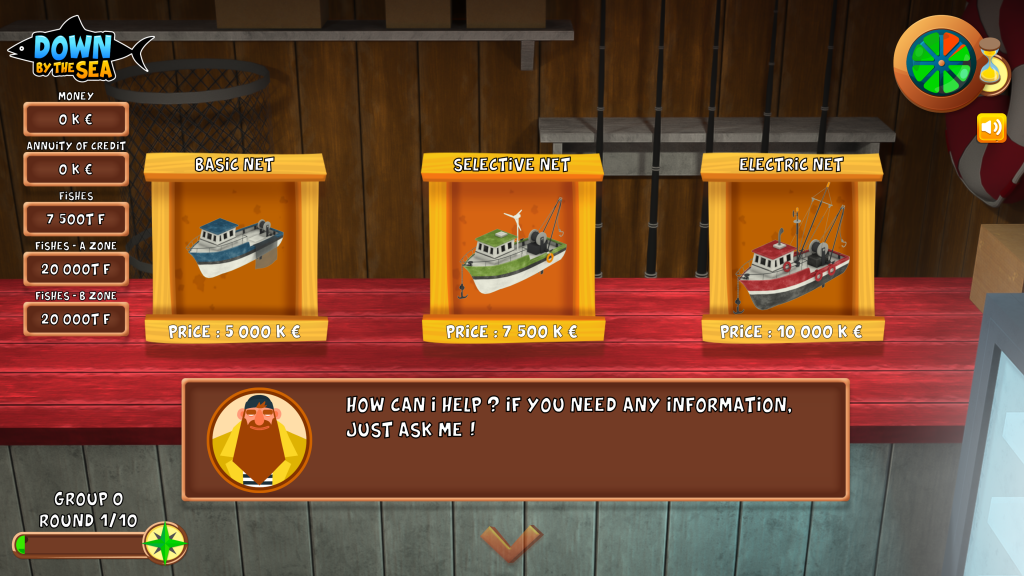Serious games, once seen as a promising method for learning and professional training, had been pushed to the background in favor of more conventional methods. However, technological advancements and changing business needs have paved the way for its resurgence. This article explores the reasons for the previous decline in interest and why serious games are making a strong comeback in the world of training today.
Why had serious games been overlooked?
Several factors contributed to the sidelining of serious games over the years:
- Lack of trust and understanding: Serious games were often seen as costly and complex tools to implement, with benefits that were difficult to quantify. The lack of understanding of their educational potential and effectiveness led to some skepticism.
- High development costs: Developing a high-quality serious game required significant resources in terms of time, money, and expertise. Companies often preferred more cost-effective and proven training methods.
- Limited technology: The technological capabilities of the 2000s and 2010s did not allow for the creation of as immersive and interactive gaming experiences as today. Graphics and game mechanics often appeared limited, especially when compared to video games that required millions of euros in investment.
- Resistance to change: Training managers were sometimes reluctant to adopt innovative methods, preferring to stick with traditional in-person or online training techniques, which were perceived as safer and more reliable.
The Reasons for the Resurgence of Serious Games
Today, several factors explain why serious games are experiencing a resurgence and are increasingly being adopted by training departments.
Gamification and Pedagogical Effectiveness
Companies are constantly seeking innovative pedagogical methods to motivate their employees and improve knowledge retention. Certain types of serious games, with their ability to simulate real-world situations and offer hands-on learning, meet these needs perfectly. Gamification, or learning through play, uses additional mechanisms such as rewards, challenges, and progress tracking to stimulate learner engagement. This results in more active participation and better assimilation of skills and knowledge.
Studies have now shown that gamification has a significant impact on learning. For example, the meta-analysis by Hamari et al. (2014) of several studies on gamification demonstrated that game elements such as points, badges, and leaderboards enhance learner motivation and engagement.
Another meta-study by Zhonggen (2019) found that serious games increase the enjoyment of learning, improve attitudes towards the subject matter, and develop metacognitive strategies. Research by Jaccard et al. (2021) and Azmi et al. (2019) also shows that serious games significantly enhance collaborative skills, motivation, and learner engagement.
Storytelling and Engagement
Storytelling is another key element of serious games. By integrating immersive narratives, serious games captivate learners’ attention and facilitate the retention of concepts. A compelling story can transform a simple lesson into a memorable adventure, allowing learners to relate to the characters and understand the consequences of their actions within a narrative framework.
The shifts created by serious games can also help overcome the saturation of traditional teaching methods. For example, when a safety procedure has been repeated numerous times and employees believe they have mastered it, a serious game can introduce unexpected variables or additional challenges that force learners to reassess their knowledge and apply concepts dynamically. This can be the only effective solution for critical training, such as safety, when simple repetition is no longer sufficient.
Montpellier SupAgro -
Serious game "Down by the sea"
This serious game with an original storytelling introduces students to the socio-economic mechanisms related to the sustainable management of natural resources. It immerses learners in the aquatic world and challenges them to effectively combine stock management with the preservation of natural resources.
Technological Evolution
Technological advancements have also contributed to the resurgence of serious games. The integration of platforms such as Unity and Unreal Engine has made it possible to create games with realistic graphics and complex scenarios. Unity, for example, allows for the development of high-quality 2D and 3D games that can be deployed across multiple platforms, including mobile, console, and PC, with full support for cloud services through Microsoft Azure.
Unreal Engine, developed by Epic Games, is known for its advanced graphical capabilities, enabling the creation of highly detailed and realistic environments. Unreal Engine also features a visual scripting system called Blueprints, which allows developers to create complex game logic without writing code. This engine integrates seamlessly with cloud services, providing great flexibility for game development and deployment.
Azure PlayFab, for example, provides scalable backend services for games, allowing for the management of multiplayer services, player data, and real-time analytics, while ensuring data security and compliance. These capabilities help reduce infrastructure costs and ensure a smooth and continuous gaming experience, which increases user engagement and, consequently, return on investment.
Serious games today offer an excellent return on investment. Development costs have decreased thanks to more accessible development platforms and open-source technologies. Rather than being a mere trend, they have now become a cornerstone of training, offering a playful and effective way to acquire new skills and knowledge.
Audace and serious games...
Audace created its first serious game in 2017., immersing nurses in a SimCity-like universe to learn the blood transfusion protocol. Once the protocol is mastered, participants must repeat it in time-sensitive and critical emergency situations to ensure their proficiency even under stress.
In the healthcare field, Audace has developed several innovative serious games:
- Immunopolis: This educational game informs and educates patients about immunotherapy, empowering them to take an active role in their treatment and health.
- Vertexa : Using virtual reality, this game offers a gamified and immersive care program for patients with eating disorders. It combines therapy and psychological education for a holistic approach to treatment.
Onco Aura -
Serious Game "Immunopolis"
Vertexa - A serious game in virtual reality
For the industrial sector, Audace has created numerous serious games for the industrial sector. Some are distinguished by their high level of gamification:
- Risk Prevention (serious game in VR) : In this serious game, inspired by the series Lost, the player is a survivor of a plane crash on a deserted island. The immersive first-person serious game places the learner at the heart of a mission that can only be completed by adhering to Orano’s safety rules. Objective: to awaken the vigilance of Orano employees by hunting down bad habits.
- Sacha (screen-based serious game): This cybersecurity serious game features a spy attempting to infiltrate Satgam Corp to test its defenses (antivirus, firewalls, etc.). The mission’s objective is to ensure that Naval Group personnel are up to the strategic challenges they face.
Orano - Serious Game
"Risks prevention"
Naval Group -
Serious game "Sacha"
In terms of scalability, Audace demonstrated its expertise with the game “La Table de Marie” for SKEMA Business School..
Chaque année, ce jeu est utilisé pour le Sprint KM, un séminaire qui initie les étudiants aux enjeux du Knowledge Management.
En 2022, Audace a conçu ce serious game, désormais réactualisé chaque année pour 800 étudiants de L3, répartis en groupes de 6, qu’ils soient en présentiel ou en distanciel.
Skema Business School - Serious game
"La Table de Marie"
Audace’s serious games illustrate how gamification and immersive technologies can enhance training by making learning more engaging and effective.

